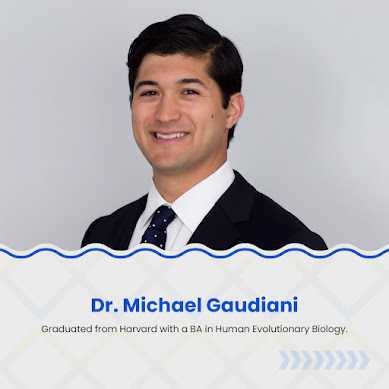"Tailoring Orthopedic Solutions for Elite Athletes to Enhance Performance"
High-performance athletes operate in an environment where the margins between victory and injury are razor-thin. Orthopedic care plays an essential role in helping them maintain peak physical condition, recover quickly, and extend their careers. By addressing sport-specific injury risks and using advanced diagnostic and treatment tools, orthopedic specialists can offer highly personalized care. Collaboration among medical professionals, strength coaches, and nutritionists further ensures that every element of an athlete’s health is considered. With innovations in recovery and rehabilitation, athletes are now able to return to competition faster and with greater resilience. The synergy between technology, data, and medical expertise continues to redefine what is possible in sports medicine, making orthopedic support a cornerstone of modern athletic performance.
1. Orthopedic Care in High-Performance Sports
Orthopedic care plays a vital role in the lives of elite athletes, whose bodies endure exceptional physical demands. These athletes require specialized support focused on maintaining musculoskeletal health, preventing injuries, and optimizing movement efficiency. The level of precision needed often goes beyond standard care, involving a deep understanding of sport-specific biomechanics and repetitive stress patterns.
In sports like basketball or track, where explosive movements and high-impact landings are routine, orthopedic specialists work closely with athletes to preserve joint integrity and soft tissue function. Tailored interventions help reduce downtime, allowing athletes to compete at their peak while minimizing the risk of long-term damage. Ongoing monitoring, including regular screenings, helps detect microtraumas before they escalate into performance-limiting conditions.
2. Injury Patterns and Treatment Approaches
Elite athletes are prone to a range of injuries that often reflect the physical demands of their specific sport. A tennis player may struggle with chronic elbow inflammation, while a soccer player faces a higher risk of ACL tears due to sudden changes in direction. These patterns help orthopedic teams anticipate vulnerabilities and craft preventive strategies.
Acute injuries like fractures or ligament tears usually require immediate intervention, sometimes surgical, while chronic issues such as tendonitis demand a more measured, long-term approach. Successful treatment hinges on early diagnosis, sport-specific knowledge, and a recovery plan that aligns with the athlete’s competitive calendar. Post-injury performance metrics are often used to guide the readiness for return-to-play.
Orthopedic specialists often rely on a blend of conventional rehabilitation and modern therapies to support healing. This personalized mix ensures athletes regain full function without sacrificing future performance or risking re-injury. Modalities like cryotherapy and soft tissue mobilization are frequently integrated into these custom plans to enhance outcomes.
3. Personalized Solutions and Diagnostic Tools
Tailoring orthopedic care begins with a comprehensive assessment of how an athlete moves, trains, and competes. Each body responds differently to stress, so identifying subtle imbalances or inefficiencies helps clinicians design interventions that are both preventative and corrective.
Technologies like motion capture and gait analysis offer detailed insight into joint mechanics and muscular coordination. In high-impact sports, these diagnostics can uncover hidden issues before they escalate into performance-limiting injuries. By combining clinical expertise with precise data, orthopedic teams create treatment plans that evolve with the athlete throughout their career. Wearable sensors are also becoming a valuable addition, providing real-time biomechanical feedback during training sessions.
4. Technology and Innovation in Athlete Recovery
Modern sports orthopedics continues to evolve with cutting-edge tools aimed at accelerating recovery and enhancing outcomes. Regenerative treatments like platelet-rich plasma and stem cell therapy are now used to reduce inflammation and stimulate tissue repair without resorting to invasive procedures. These options are especially valuable for soft tissue injuries that are difficult to resolve with rest alone.
In some cases, 3D-printed implants or custom braces provide athletes with a faster return to play by matching the exact dimensions of their anatomy. Innovations like these allow orthopedic teams to personalize care in ways that were not possible a decade ago, bridging the gap between injury and peak performance. The integration of AI-driven imaging analysis is also beginning to refine injury diagnostics with greater speed and accuracy.
5. Interdisciplinary Support for Athlete Health
The success of an orthopedic care plan often depends on seamless collaboration across multiple disciplines. Surgeons, physical therapists, strength coaches, and nutritionists work together to ensure each part of an athlete’s recovery and performance strategy is aligned. This unified approach minimizes setbacks and promotes more efficient rehab timelines.
In high-level competition, even small gaps in communication can lead to prolonged recovery or recurring injuries. Teams that emphasize shared goals and regular coordination are better equipped to adapt care strategies as an athlete’s condition evolves. Regular interdisciplinary meetings and shared performance dashboards help these teams stay agile and responsive to each athlete’s needs.
6. Optimizing Recovery and Long-Term Performance
Sustaining athletic performance over time requires more than just healing from injuries—it demands a proactive approach to movement quality, load management, and functional strength. Recovery routines that include mobility work, neuromuscular re-education, and progressive conditioning help reduce the chance of reinjury.
Athletes who follow structured orthopedic guidance often see improvements not just in durability but also in efficiency and power output. When recovery is treated as part of performance rather than an interruption, it becomes a competitive advantage. Many elite performers now consider recovery a central pillar in their training cycle, prioritizing it equally with physical conditioning.


Comments
Post a Comment